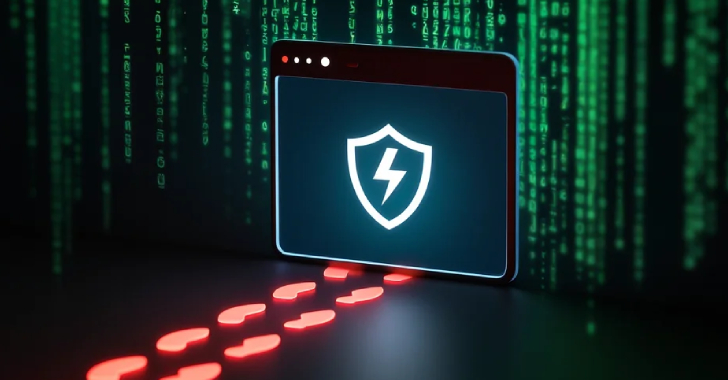
Government Tech on the Line: Best Practices for Achieving FISMA Compliance
The digital age has brought about a seismic shift in the way governments handle sensitive data. With the proliferation of cyber threats and the increasing reliance on technology for critical functions, securing government information systems has never been more crucial. The Federal Information Security Management Act (FISMA) stands as a cornerstone in the effort to safeguard government tech, making compliance with its provisions an imperative task. In this article, we delve into the significance of FISMA compliance and explore the best practices that government agencies can adopt to protect their digital assets.
Understanding FISMA Compliance
FISMA, enacted in 2002, was a watershed moment for U.S. federal cybersecurity. Its primary purpose is to bolster the security of federal information systems by establishing a comprehensive framework for securing government data. FISMA defines a series of security standards and guidelines that federal agencies must adhere to in order to protect sensitive information.
One of the central tenets of FISMA is the requirement for federal agencies to develop, implement, and maintain an information security program. This program should encompass a variety of elements, including risk assessment, security policies and procedures, security awareness training, continuous monitoring, and incident response planning. Achieving FISMA compliance involves adhering to these elements while tailoring security measures to the unique needs of each agency.
The Stakes of FISMA Compliance
Non-compliance with FISMA can have dire consequences. Data breaches and cyberattacks on government systems can lead to the exposure of sensitive information, disrupt critical services, and erode public trust. In addition to these immediate risks, agencies failing to meet FISMA standards can face legal consequences and financial penalties. Therefore, achieving and maintaining FISMA compliance is not merely a bureaucratic checkbox but a vital commitment to national security.
Best Practices for Achieving FISMA Compliance
- Risk Assessment and Management: The cornerstone of FISMA compliance is understanding the risks to your information systems. Conduct thorough risk assessments to identify vulnerabilities and potential threats. Once identified, prioritize these risks and develop a comprehensive risk management strategy. Regularly reassess risks to adapt to evolving threats.
- Security Policies and Procedures: Establish clear and well-documented security policies and procedures. These should cover areas such as access control, data encryption, incident response, and personnel security. Ensure that all employees are aware of and trained on these policies.
- Continuous Monitoring: Cyber threats are constantly evolving, so continuous monitoring is crucial. Implement automated monitoring systems that can detect unusual activities and potential breaches in real-time. This proactive approach allows for quick response to emerging threats.
- Incident Response Plan: Develop a robust incident response plan that outlines how your agency will react in the event of a security breach. Ensure that all employees are aware of their roles and responsibilities during an incident. Regularly test and update the plan to keep it effective.
- Access Control: Limit access to sensitive data to only those who need it to perform their job functions. Implement strict access controls, including multi-factor authentication, to prevent unauthorized access.
- Data Encryption: Encrypt sensitive data both in transit and at rest. Encryption adds an extra layer of security, making it difficult for malicious actors to access and use stolen information.
- Security Awareness Training: Human error is a significant factor in many security breaches. Regularly train employees on security best practices and the latest threats. Encourage a culture of cybersecurity awareness throughout the organization.
- Third-Party Risk Management: Government agencies often work with third-party vendors and contractors. Ensure that these entities also meet FISMA compliance standards and have robust cybersecurity measures in place. Perform regular security audits of third-party systems.
- Patch Management: Keep all software and systems up to date with the latest security patches and updates. Vulnerabilities in outdated software can be easy targets for cybercriminals.
- Documentation and Compliance Reporting: Maintain detailed records of security activities and compliance efforts. Regularly report compliance status to the appropriate authorities, as required by FISMA.
- Regular Audits and Testing: Conduct regular security audits and penetration testing to identify weaknesses in your security posture. Address any vulnerabilities promptly.
- Collaboration and Information Sharing: Collaborate with other government agencies and organizations to share threat intelligence and best practices. Cyber threats often transcend agency boundaries, and cooperation can enhance overall security.
The Future of FISMA Compliance
As technology continues to advance and cyber threats become more sophisticated, FISMA compliance must evolve accordingly. Government agencies should keep an eye on emerging technologies such as artificial intelligence and quantum computing, which may introduce new challenges and opportunities in the realm of cybersecurity.
Additionally, international collaboration on cybersecurity standards and practices is becoming increasingly important. Cyber threats are not constrained by borders, and global cooperation is essential in combating them effectively.
Conclusion
FISMA compliance is not a one-time task but an ongoing commitment to safeguarding government information systems. The stakes are high, with the security of sensitive data and critical services on the line. By following best practices, conducting regular risk assessments, and staying vigilant in the face of evolving threats, government agencies can fulfill their duty to protect the digital infrastructure that underpins the functioning of our nation. In the ever-changing landscape of cybersecurity, FISMA compliance remains a steadfast anchor, ensuring that government tech stays on the right side of the digital battlefront.
Contact Cyber Defense Advisors to learn more about our FISMA Compliance solutions.





